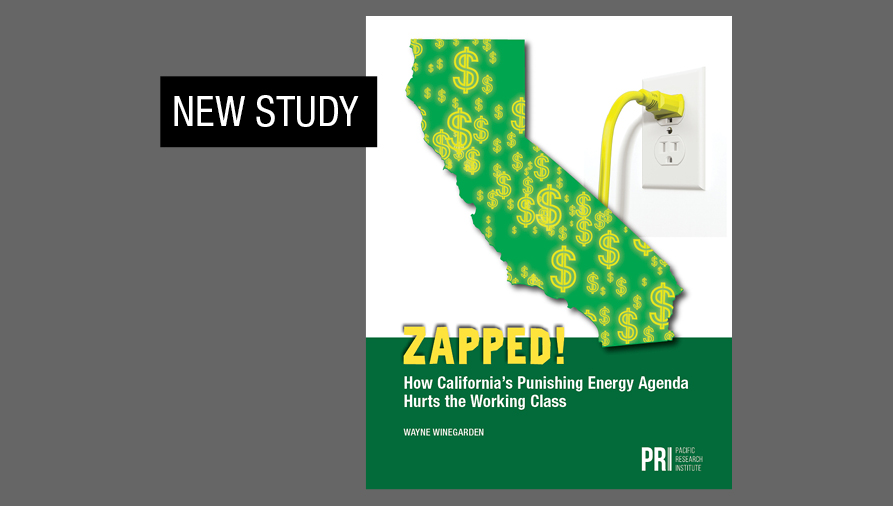About that transition to all-renewables energy sources by 2045: Californians who are already punished by record-high electricity prices should be prepared to pay more than ever over the next two decades.
Either that, or leave, a choice that many have already made and many more will.
Recently published research by PRI Senior Fellow Wayne Winegarden found that “a complex array of energy regulations, taxes, and subsidies … unnecessarily inflates electricity prices, which were 56% higher than the U.S. average as of 2020.”
“Despite consuming about 34% less electricity per household, these high electricity prices cause the average California electricity bill to be slightly higher than the national average.”
The rush to replace fossil fuels and nuclear with renewables will only exacerbate this current problem. Over the next two decades, upgrades to the grid that will be needed to complete the transition will cost more than $30 billion, says a new report from the California Independent System Operator, which manages the power grid.
When it comes to the politics of energy, green, it seems, is always linked to red, in this case the color of ink that indicates monetary loss.
By 2040, the state will need to add more than 120 gigawatts of “clean” power to the grid, as demand is expected to triple. Without new high-voltage transmission lines to connect future solar and wind farms, geothermal sources, and “out-of-state resources,” the state won’t be able to meet the increased demand, nor reach its self-imposed 2045 deadline.
CAISO says that “for a number of these additions, lead times of eight to 10 years are reasonable or even optimistic.” In other words, there’s enough time to build the additional infrastructure. But that doesn’t make the significant costs any less of a financial yoke.
As is always the case with any government master plan that’s implemented for our own good, the poorest bear the heaviest burden. Already the lower-income households and those “living in the Central Valley, Inland Empire, and eastern regions are bearing a disproportionate burden from the state’s high electricity costs,” says Winegarden’s paper.
“In far too many cases, the high costs force too many families into the scourge of energy poverty.”
There’s no defensible reason for California’s electricity prices to “be significantly higher than the national average,” he says. Simply put, they are the product of policy decisions, including Senate Bill 100, the legislation that requires the state to go to 100% renewables by 2045. Other policies that have forced, or will force, energy prices higher include cap-and-trade; the Advanced Clean Car Program; low-carbon fuels standard; energy efficiency standards; electric vehicle subsidies; and restrictions on oil and natural gas production.
Rather than repeal the policies that drive up costs – which “would substantially help low-income households across the state, particularly in the central and eastern parts of the state,” according to Winegarden – lawmakers continue shoving the state toward a green hole of higher prices and a less-reliable grid.
Renewables are trendy, though, and California, if nothing else, wants to be at the leading edge of every tide that’s favored by the elitist class. The cost never matters because the currency isn’t cash but instead processes and staked-out positions that resonate with the “right” people. That’s not the way energy policy should be made but that’s what we’re stuck with in California as long as flash outweighs substance.
Kerry Jackson is a fellow with the Center for California Reform at the Pacific Research Institute.

